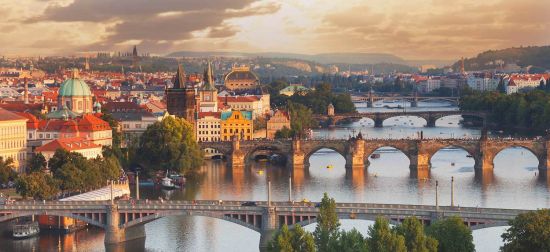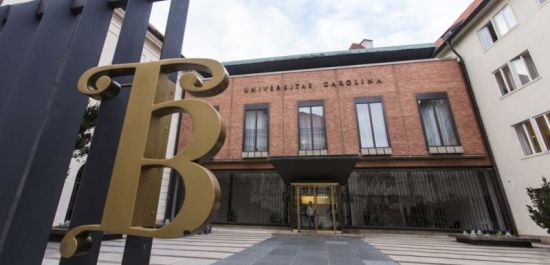| | 8th International Conference
on the Physics of Dusty PlasmasMay 20–25, 2017, Prague, Czech RepublicVenueConference center in Hotel DUO
All scientific parts of the conference will be held in the conference
center of Hotel DUO.
Hotel Duo offers comfort and high quality services for the event. Newly
renovated spacious Congress hall "Prague" will host the scientific sessions.
We will enjoy hopefully warm spring days outside, on the hotel terrace and in
the summer garden, where the ice-breaker will open the event.
Check the location with Google.
Prague
Prague, City of a Hundred Spires, a UNESCO monument and one of the most beautiful cities in the world.
Prague (Czech: Praha, German: Prag) is the capital and largest city of the
Czech Republic. It is the 14th largest city in the European Union. It is
also the historical capital of Bohemia situated in the north-west of the
country on the Vltava river, the city is home to about 1.26 million people,
while its larger urban zone is estimated to have a population of nearly
2 million. The city has a temperate climate, with warm summers and
chilly winters. Prague has the lowest unemployment rate in the European
Union.
Prague has been a political, cultural, and economic centre of the central Europe
with growing fortunes during its 1,100-year existence. Founded
during the Romanesque and flourishing by the Gothic, Renaissance and Baroque
eras, Prague was not only the capital of the Czech state, but also the seat
of two Holy Roman Emperors and thus also the capital of the Holy Roman
Empire. It was an important city to the Habsburg Monarchy and its
Austro-Hungarian Empire and after World War I became the capital of
Czechoslovakia. The city played major roles in the Bohemian and Protestant
Reformation, the Thirty Years' War, and in 20th-century history, during both
World Wars and the post-war Communist era.
Prague is home to a number of famous cultural attractions, many of which
survived the violence and destruction of 20th-century Europe. Main
attractions include the Prague Castle, the Charles Bridge, Old Town Square
with the Prague astronomical clock, the Jewish Quarter, Petřín hill and
Vyšehrad. Since 1992, the extensive historic centre of Prague has been
included in the UNESCO list of World Heritage Sites.
The city boasts more than ten major museums, along with numerous theatres,
galleries, cinemas, and other historical exhibits. An extensive modern public
transportation system connects the city. Also, it is home to a wide range of
public and private schools, including Charles University in Prague, the
oldest university in Central Europe. Prague is the fifth most visited European city
after London, Paris, Istanbul and Rome.

Universitas Carolina Pragensis
The oldest university in central Europe, Charles University was founded on
April 7, 1348 by Charles IV, then the Holy Roman Emperor and the King of
Bohemia. From its foundation, it was devoted to studia generalia and it was
endowed by the emperor with all the privileges enjoyed by older European
universities. In accordance with medieval conceptions of the academic range
of a complete university, the newly established University had four faculties
— Theology, Law, Medicine and Arts. At present, Charles University consists
of seventeen faculties and educates more than 45,000 students. The faculties
are centers not only for teaching, but mainly for research and scholarship.
Faculty of Mathematics and Physics
Mathematics and physics were traditionally taught within the frame of the
Philosophical Faculty (Faculty of Arts). In 1920, the Faculty of Natural
Sciences was established and the Faculty of Mathematics and Physics (Czech
abbreviation MFF UK) separated from this faculty in 1952. Among the scholars
who have worked at and/or co-operated with Charles University and its
faculties while staying in Prague were Tycho Brahe, Johannes Kepler, Bernard
Bolzano, Ernst Mach, Albert Einstein, Rudolf Carnap and Jaroslav Heyrovský.
Now, the Faculty provides education for more than 2,200 students in fields of
computer science, mathematics, and physics.

|
 Home
Home
 Committees
Committees
 Program
Program
 Proceedings
Proceedings
 Venue
Venue
 Links
Links
 e-mail
e-mail


 Home
Home
 Committees
Committees
 Program
Program
 Proceedings
Proceedings
 Venue
Venue
 Links
Links
 e-mail
e-mail


